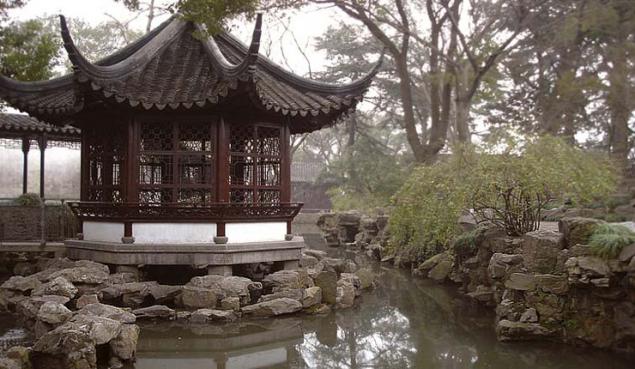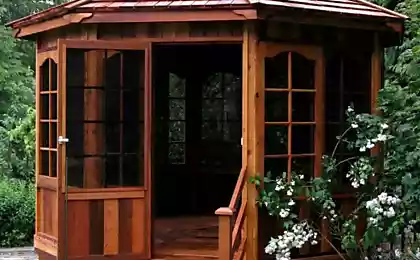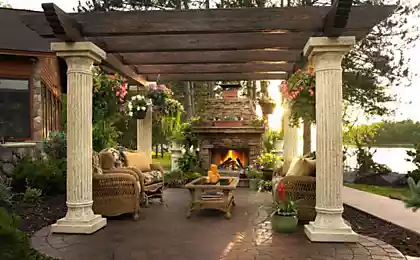1187
Garden pavilions

Garden pavilions - the universal garden decoration and park. They are mainly used to create zones of privacy, relaxing, reading, meeting, reflection and creative work. In the European tradition of garden pavilions and their variations - rotunda, pergolas, artificial caves - or in a most advantageous parts of the park, or vice versa, where they quietly location: behind the hedge, trees among rock cliffs.
In Chinese gardens garden pavilions are traditionally a place for reflection and meditation, admiring the scenery. This gazebo modest, small, designed for two to four people. In popular now stylizations of oriental pavilions expressed and interpenetration of cultures, and the deep traditions of Russian landscape art. (Think of popularity in the XVIII century chinoiserie style). Naturally, modern examples of this style are born in a different historical context, in other technical era.
In Japan, the development of gardens, architecture associated with the cult of tea, the art of tea ceremony. In the Far East drink tea beverage is a special action; the purpose of the ritual is not aesthetic, and religious and moral (or rather, in Japan, these areas are not separated).
The tradition of drinking tea has existed in Japan since ancient monastery in the home, at the court of the Emperor, Shogun. It was a good time with games guessing teas. But the real tea ceremony has developed thanks to the master Murata Shuko (1422-1502 years) and his followers and successors.
At the heart of the tea ceremony is Zen consciousness, a special type of perception of the world and man. Tea ritual takes place in a tea house built near the house or monastery. In the XVI century in Japan are having a special tea gardens - "tyaniva." The garden was usually small, to the tea house was a narrow lane called "Rhodes" - "earth moistened with dew." Sad prepares one for the perception of beauty and harmony.
Rules ceremony depended on the time of day and season. The most valuable thing in the tea ceremony - a sense of calm, concentration. Conversation is not obligatory. Each participant in their own way experiencing the beauty and truth of the world.
Tea House - Chashitsu - in appearance resembles a hermitage, hut; built from the simplest of materials - bamboo, wood and straw. Structurally, it comes from the classical frame building that did not have the supporting walls. Clay walls framed with wooden beams with beautiful texture. The entrance was low, so that every visitor had to bend down, entering. Before entering located bench for swords. Floor house raised above the ground; the window is low to cover sitting on the floor of the owner. It is not framed wooden doors were closed, covered with paper.
The size of the tea house is very small, about four tatami (mat size 190h95 cm). In deepening the floor hearth was located. Interior sure to include niche - Toko-nome - to scroll with calligraphy and flower arrangement - tyabana. The limited space of the tea house and garden to create special ceremony on Wednesday. The Tea Room is a place where a person turns to the true simplicity and released from the material.
(In the book, NS Nikolaeva Art Culture of Japan of the XVI century).























